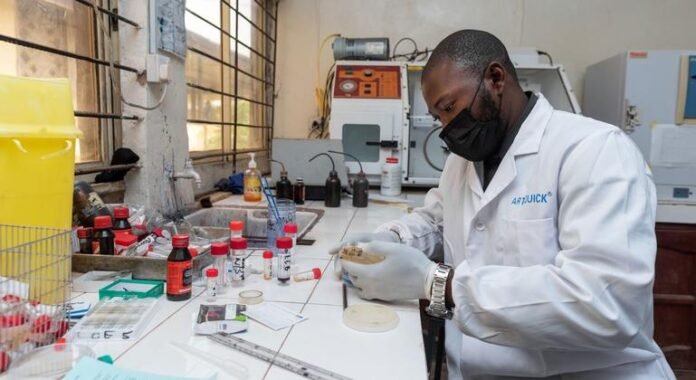Here are some important facts ahead of the high-level meeting on Antimicrobial Resistance (AMR) to be held at the UN General Assembly on 26 September.
What is Antimicrobial Resistance (AMR)?
Antimicrobial drugs, from antibiotics to antivirals, have increased life expectancy since their discovery a century ago. Every day, these essential medicines prove effective in saving millions of lives. But it is possible that one day these drugs may stop working.
When antimicrobial drugs cease to have an effect on microorganisms such as bacteria, viruses, fungi and parasites, the situation of antimicrobial resistance (AMR) arises.
According to the United Nations World Health Organization (WHO), drug resistance causes antimicrobial drugs to stop working and infections become difficult or impossible to treat. This increases the risk of disease spread or progression, disability and death.
Like COVID-19, drug-resistant infections are not bound by borders and no one is immune.
WHO: ‘It can happen to anyone’
Behind every AMR statistic, there is a cost in real human lives. The growing burden includes limited treatment options, prolonged hospitalization, continuous medication, loss of income, medical debt, poverty, family loss and suffering. It affects life severely and in some cases it even proves fatal.
According to the United Nations Health Organization, “it can happen anywhere.” Even if you’re perfectly healthy, a minor injury, minor surgery, or even a simple lung infection can suddenly become life-threatening.
For those who already suffer from diseases such as cancer, HIV or diabetes, an untreated infection can pose an additional risk, when least expected.
What are the reasons for this?

Several factors may accelerate the emergence and spread of AMR, one of which is the overuse of antibiotics.
Overuse and misuse of antimicrobial drugs: Using antibiotics when not needed, doctors overprescribing and not completing treatment can all contribute to resistance.
Uses in Agriculture: Using antibiotics to prevent or accelerate the development of disease in animals can lead to resistance, which can then spread to humans.
Inability to properly control infection: Inadequate sanitation and hygiene in health care settings and communities increase the spread of resistant microorganisms.
World Trade and Travel: With increased movement of people and goods, resistant microorganisms can easily spread across borders.
AMR results
The increase in AMR cases has serious implications for individual and public health. AMR threatens millions of lives and our economic future. It also has implications for food security, development and security.
According to the World Bank, its estimated annual global cost could reach $3.4 trillion by 2030, pushing an estimated 28 million people into poverty by 2050.
Global action plan
The good news is that AMR is 100% preventable. In 2015, international partners adopted a global action plan and worked to raise public awareness, promote responsible use of antimicrobial drugs, and continue research.
Another effective tool is to reduce the need for antimicrobial drugs by strengthening health systems through universal health coverage to prioritize infection prevention and control, vaccination and water, sanitation and hygiene (WASH) programmes.
At the same time, WHO is monitoring and reporting on drug-resistant microorganisms. WHO has updated its list of drug-resistant bacteria that pose the greatest risk to human health as early as 2024.

“Since the first list of bacterial priority pathogens was published in 2017, the threat of antimicrobial resistance continues to grow. The effectiveness of many antibiotics has declined and many benefits of modern medicine are at risk.”
“By mapping the global burden of drug-resistant bacteria and assessing their impact on public health, this inventory is critical to driving critical investment and addressing the crisis of access and pathways to antibiotics,” he emphasized.
Where are steps taken to prevent AMR?
- World leaders will agree on a political manifesto in September A high-level meeting will be held on AMR For, the United Nations General Assembly is gathering.
- AMR’s Quadrilateral Joint Secretariat coordinates cooperation with the Food and Agriculture Organization (FAO), the United Nations Environment Program (UNEP), WHO and the World Organization for Animal Health (WOAH), under its core mandate, the ‘One Health’ spectrum. , to support global action to combat AMR.
- WHO, as early as 2024, to raise public awareness ‘Global AMR is invisible, but I’m not’ The name campaign has also started. World AMR Awareness Week is also observed from 18 to 24 November every year.
- WHO launched a Survivors Task Force to provide a platform and voice for those who have experienced complications from drug-resistant infections.
- Read the WHO factsheet on AMR here.

